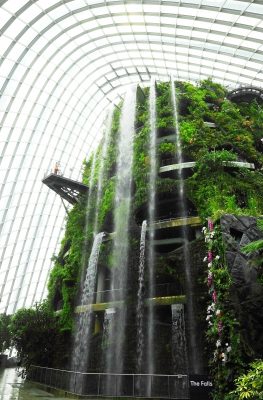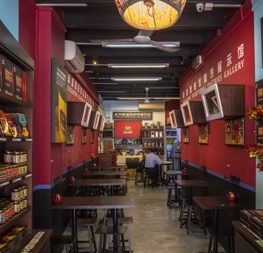Published on November 29, 2017

For the first three days of Shawwal, the 10th month of the Islamic lunar calendar, Singapore’s Arab Quarter comes alive on Hari Raya Aidilfitri, or Eid-al-Fitr. The festival celebrates the end of Ramadan with bazaars and performances that occupy the streets around the Sultan Mosque at Kampong Glam. Muslims in Singapore welcome the eve of the festival by lighting pelitas, panjuts, or lampu colok (oil lamps similar to torches) to place outside of their homes.
On the day itself, men wear their best baju melayu (a loose shirt and trousers combo) and women don on their most lavish baju kurung, a full-length blouse and skirt made of silk or hand-dyed batik festooned with ornate designs and stitching. Dressed to the nines, they gather for communal prayers and listen to khutba (sermons) at the mosques, where it is also common to offer zakat al-fitr, food for charity.
At night, the streets of Kampong Glam light up with Islamic motif and arches that greet festival-goers “Selamat Hari Raya” — “Happy Hari Raya.” Chinese-Islamic cuisine beckons at Geylang Serai Bazaar, the epicenter of the festivities. Aside from arts, crafts, and fashion, the stalls dole out sayur lodeh (vegetables in coconut milk), rendang (spicy beef stew), lemang (glutinous rice cakes cooked inside bamboo), and kueh (bite-sized cakes, cookies, pies, fritters, and scones).

You Might Also Like…
For other celebrations with a strong Malay influence, visit Brunei’s respective Eid ul Fitr (Hari Raya) celebrations. For an alternative festival stop in the month of June, visit the Bali Art Festival in Indonesia.






